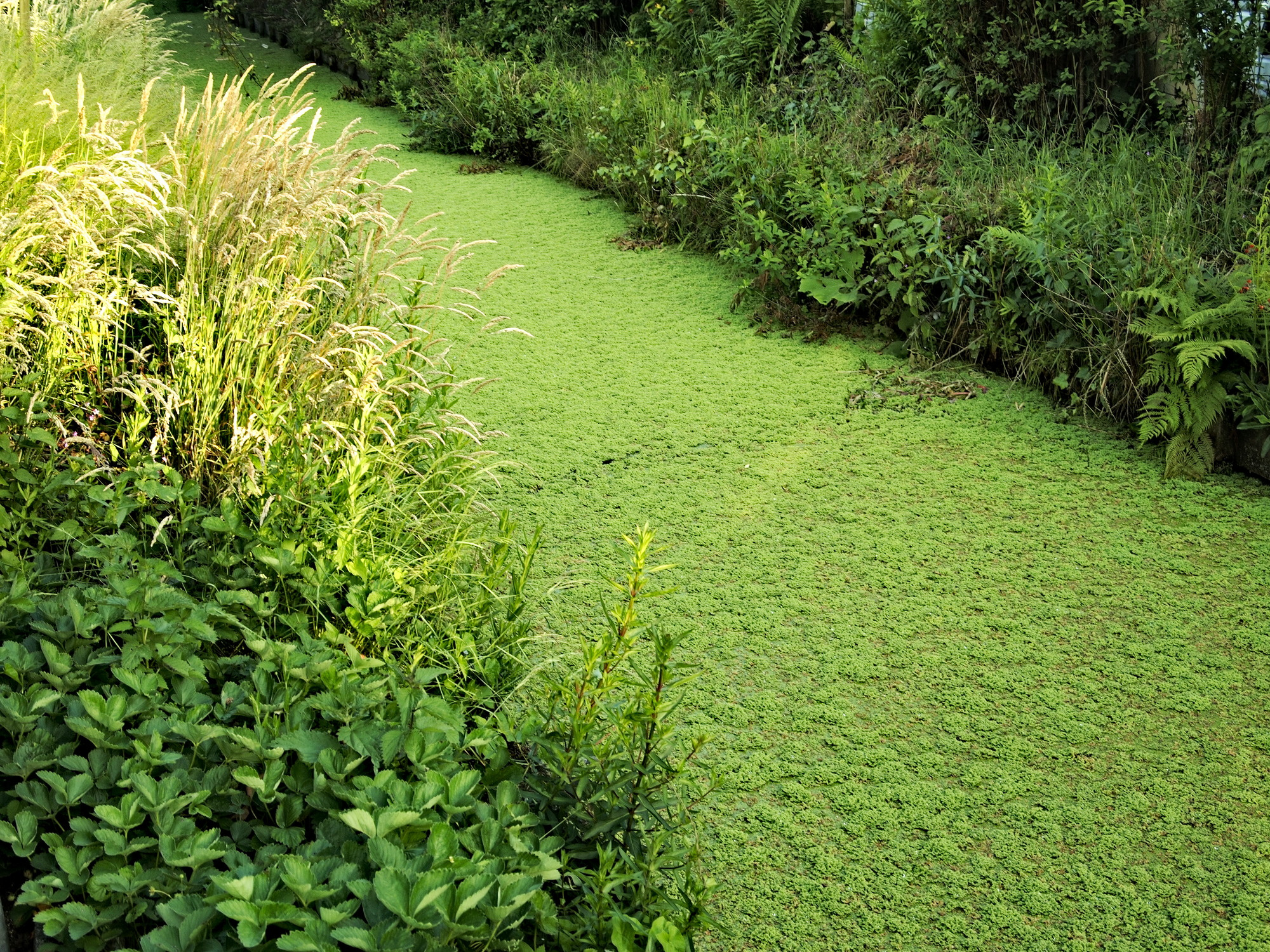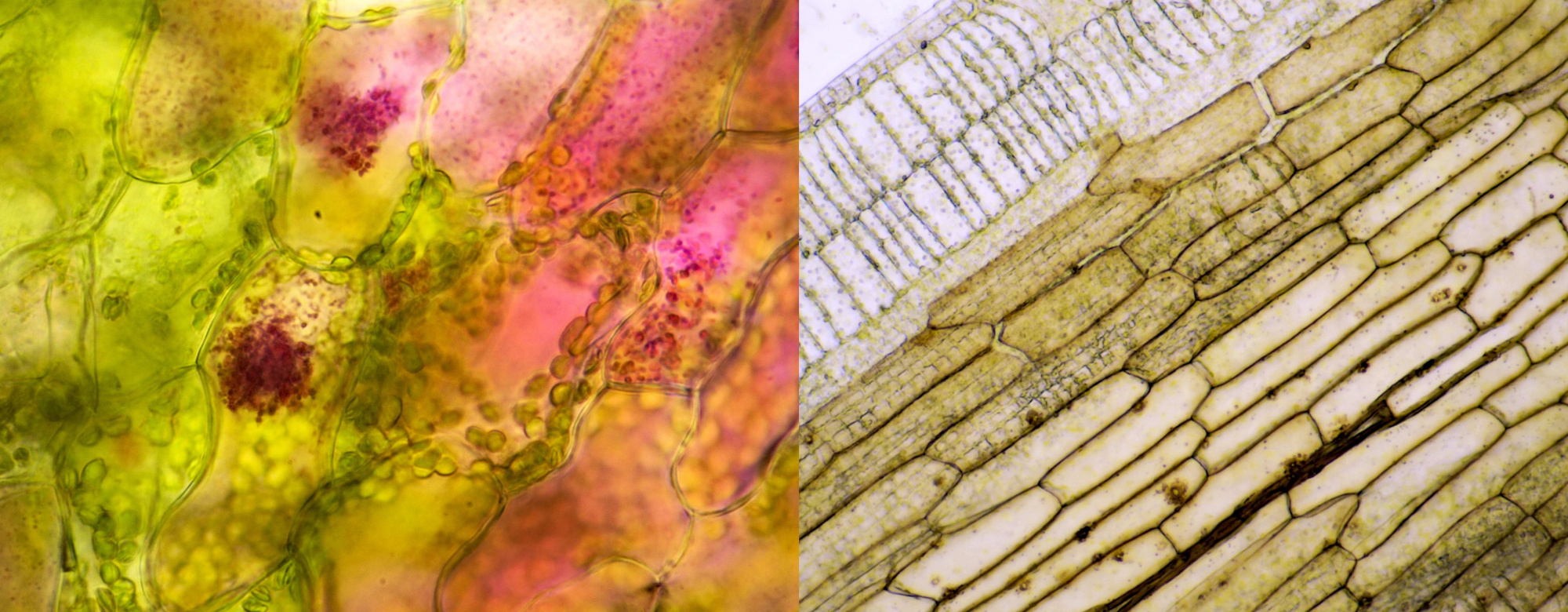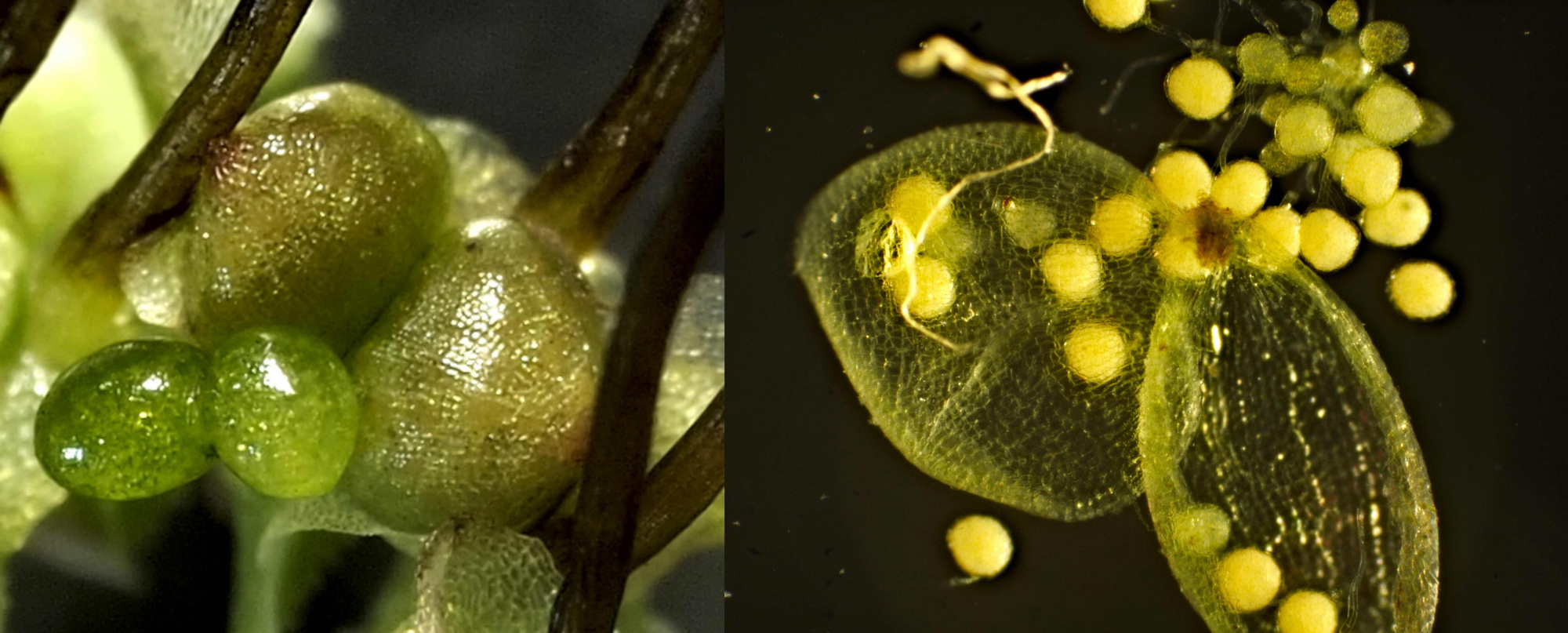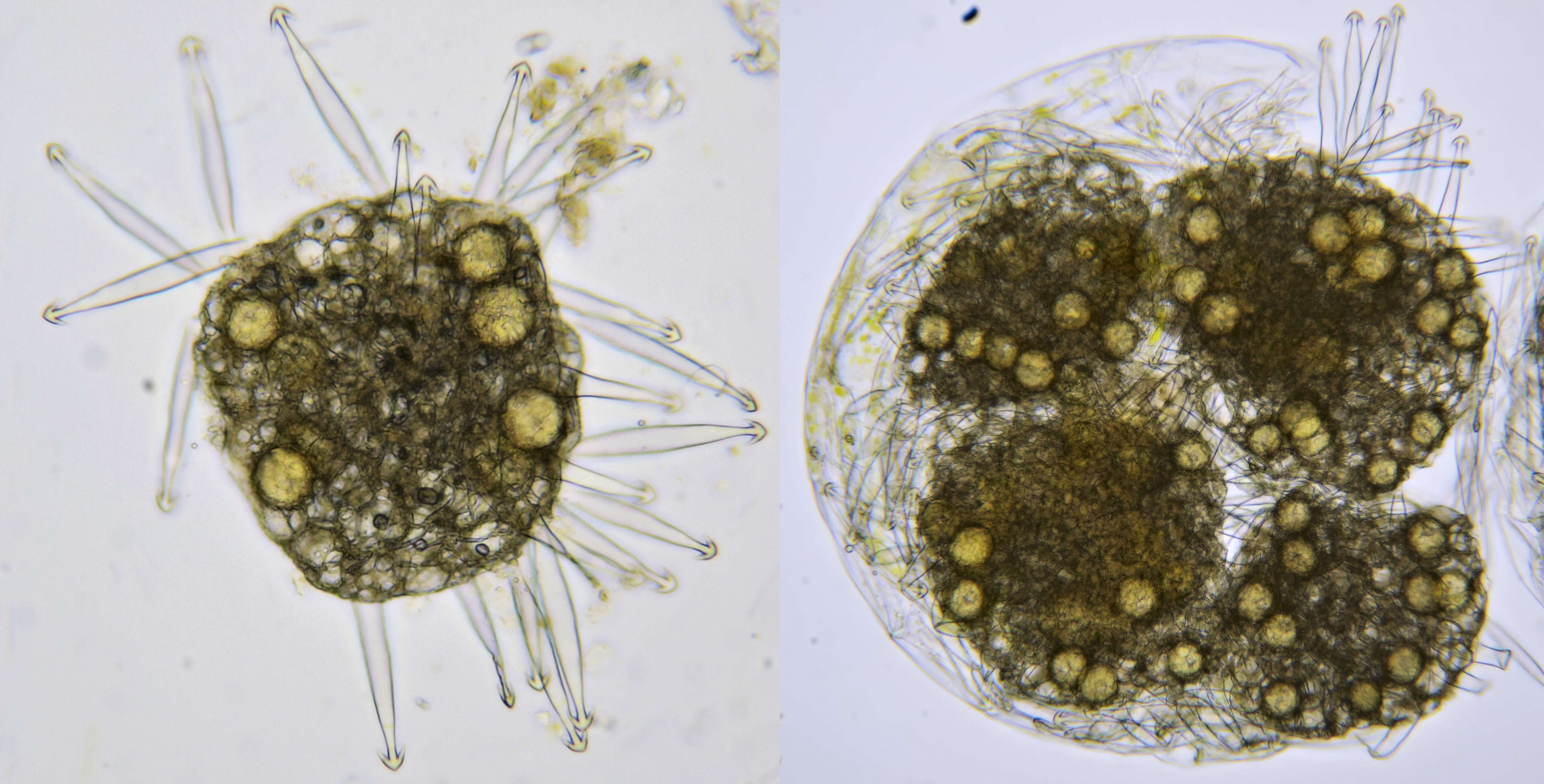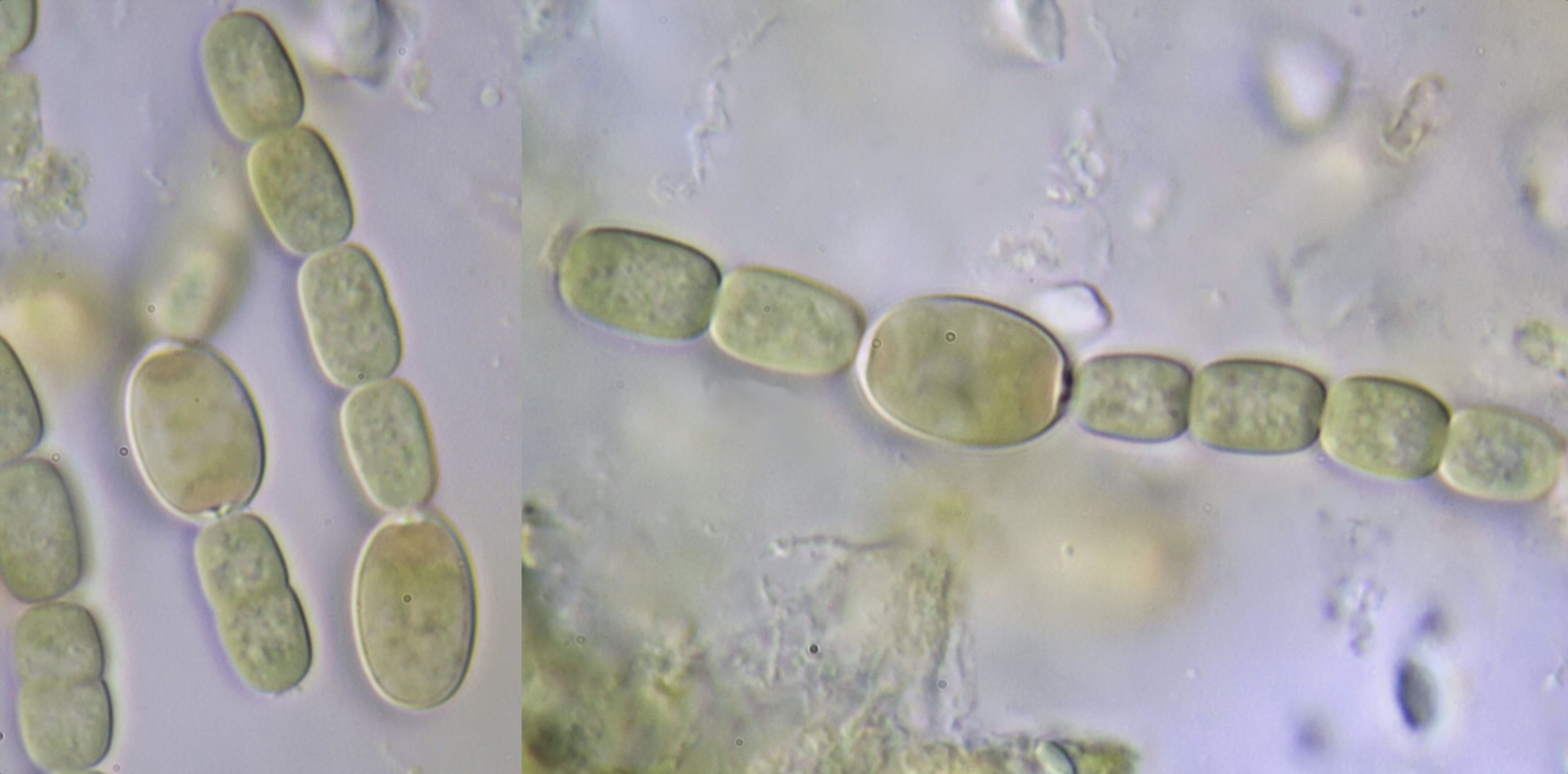
The original article appeared in 'Blad', the magazine of garden park Nieuw Vredelust
A few years ago I saw that the ditch behind our garden house at garden park Nieuw Vredelust was completely covered with some kind of duckweed. On closer inspection it turned out to be a water fern, so not a duckweed at all. It was the first time that I saw this in a ditch. The water fern in question is called Azolla filiculoides and it is native to America, so it is actually an exotic species. The first time this plant was discovered in the Netherlands was around 1900, it may have spread from a botanical garden. Yet, this plant was common in Europe a long time ago, but disappeared during one of the ice ages. Azolla filiculoides flourishes well in nutrient-rich water and in these conditions it spreads very quickly, causing the ditch to be completely overgrown with it. The thick layer on the ditch creates an anoxic environment in the water, causing fish and other animals to die. This situation will do damage to the ecosystem and is harmful for animals and plants in a ditch. The leaves can turn dark red due to the formation of red pigments (carotenoids) in response to stress (UV from sunlight) or during the transition to autumn and winter.
Azolla lives together with a microscopic symbiotic partner: a cyanobacterium called Anabaena azollae. This blue-green algae converts nitrogen from the air into a form that can be utilised by the water fern by a process called nitrogen fixation. Due to the accumulation of nitrogen in the water fern, this plant is great as compost and can be used as a fertiliser. Furthermore, the water fern can also be used for the production of food for animals.
If you take a closer look at the leaves from Azolla, you will suddenly see that it is very different from duckweed and that those leaves are very delicate. If you see this water fern, it is worthwhile inspecting it with a magnifying glass. The following pictures were taken with a microscope.
The leaves of Azolla filiculoides at low magnification.
Tissue structure of leaf (left) and stem (right). In the left picture, the carotenoid pigment in the cells is clearly visible, causing the water fern to turn red.
In favorable conditions, Azolla filiculoides propagates by spores. Between the leaves there are some kind of capsules that contain sporangia. One such capsule is called microsporocarp.
Microsporocarps containing yellow sporangia.
The sporangia contain the final spores that enable the spread of the water fern. Each sporangium contains 64 microspores, which are organised in packages.
Packages containing the spores.
I would like to end this article with the blue-green algae that enables the nitrogen fixation. Without this symbiosis, the water fern would probably not survive for long. Anabaena azollae contains specialised cells called heterocysts which are the location of nitrogen fixation.
The cells of Anabaena azollae are arranged in a chain. The bigger heterocysts can be seen in which the nitrogen fixation takes place.
Technical details
The low magnification image of the leaves was taken with a Carl Zeiss 3.2/0.07 objective directly coupled to the camera. For the other images, a Carl Zeiss Neofluar 16/0.40, Neofluar 40/0.75 and a Lomo apochromat 70/1.23 were used.
